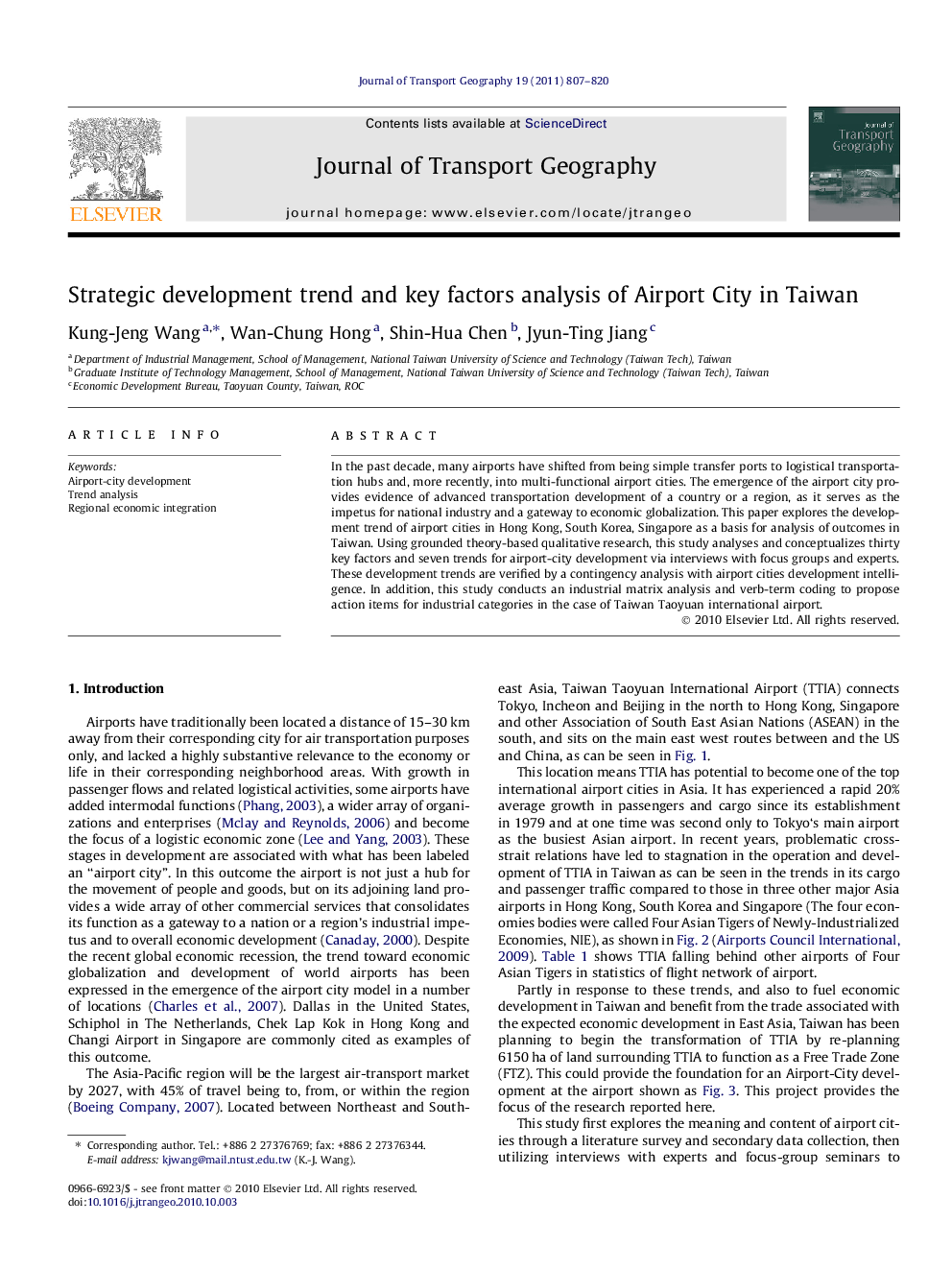| Article ID | Journal | Published Year | Pages | File Type |
|---|---|---|---|---|
| 1059514 | Journal of Transport Geography | 2011 | 14 Pages |
In the past decade, many airports have shifted from being simple transfer ports to logistical transportation hubs and, more recently, into multi-functional airport cities. The emergence of the airport city provides evidence of advanced transportation development of a country or a region, as it serves as the impetus for national industry and a gateway to economic globalization. This paper explores the development trend of airport cities in Hong Kong, South Korea, Singapore as a basis for analysis of outcomes in Taiwan. Using grounded theory-based qualitative research, this study analyses and conceptualizes thirty key factors and seven trends for airport-city development via interviews with focus groups and experts. These development trends are verified by a contingency analysis with airport cities development intelligence. In addition, this study conducts an industrial matrix analysis and verb-term coding to propose action items for industrial categories in the case of Taiwan Taoyuan international airport.
Research highlights► This study explores the intelligence and definition of airport cities in Four Asia Tigers. The proposed airport-city model is an effective framework for long term planning of airports. ► This study summarizes thirty key factors and seven trends for airport-city development using grounded theory-based qualitative research. ► A case of Taiwan Taoyuan international airport-city development planning is performed. The main emphasis of planning action is in the effective management of the airport and the mix of, and access to, services on surrounding land. ► Taiwan’s airport currently lags behind other major Asia-Pacific airports, but has the capacity to apply airport-city planning policy to expand and develop its role as an aviation hub.
